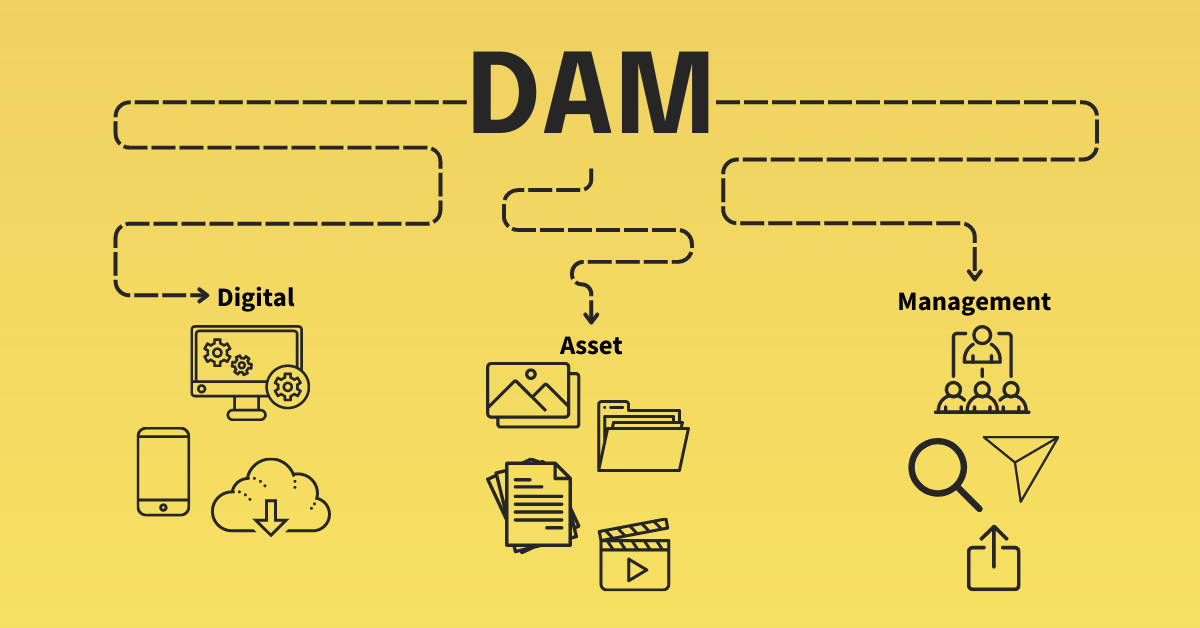Business Continuity and Digital Asset Management


In the bad old days, organizations could lose 100% of their files in a fire, flood, or some other catastrophe. With paper files that happened all the time. Even with mostly digital files that happened, and still can happen. Keeping files in a single location susceptible to traditional catastrophes or more modern ones, like cyber attacks, increases the risk for a potentially devastating situation.
That’s why it’s important to think about your business continuity plans for your important brand assets. Here’s what to consider when planning for what could happen to your business operations in case of a disruption.
Access
Does access to the company’s files depend on being at the office? That was the way it always was up until only about a decade ago. If there was a major disruption at the office, all work might be equally disrupted. With the rise of cloud access, that situation has started to fade away but it is still common among many organizations and in many industries.
In addition to whether files are managed in a cloud platform or on an on-site server, it’s important to consider exactly who has access to files. Does every user potentially need to go through a gatekeeper to download an asset or is self-service allowed?
These are the important questions to ask when structuring your file library and what solutions will make it possible for your team to achieve their goals.
What we recommend: Cloud systems provide the greatest degree of access and promote widespread adoption by making it easier for the organization to maintain and easier for users to join. Self-hosted services or on-premise options, although they do provide certain flexibility of setup and security controls (provided you have the right in-house staff), have limitations that often outweigh the benefits compared to a cloud system. These limitations are further exacerbated for teams with remote workers or distributed teams. Similarly, relying on a VPN can slow use access and create potential issues around software updates. Accessing the system at any time is also critical. In an emergency, the system needs to be available even if outside of normal working hours. The system should also have minimal downtime to not interrupt workflows. Systems should have uptimes greater than 99% and be verified by a third party, such as Pingdom.
Security
The risks to information are much greater than ever before and only increasing. Cyber theft is the fastest growing crime in the US and accounted for $450 billion in damages in 2016. That number is expected to increase to $6 trillion annually in 2021.Today, 46% of business leaders say that their organization cannot stop every attempt to break into their internal networks.
How are assets protected while static in a system? What about during transfer? What type of encryption, if any, is applied to the files? These are the basic questions that need to be asked. Companies should also be concerned about password control and recovery, and user access management.
Not being concerned about security is no longer an option, but that also doesn’t mean that every person needs to become a security expert. Choosing the right solution that provides proper encryption, safety checks, and redundancies can ensure your files are safe and secure.
What we recommend: At a minimum, access must be password-protected and easy to manage. An administrator should be able to add, remove, or limit the access of users instantaneously. Without this type of password-protected user control, users could retain access after leaving the organization or share access to unregistered third parties. An additional option to consider is a Single Sign On option which provides needed security protocols and also reduces administrative burden and user friction.
The files should also be encrypted while in the system and during transfer. A proper level of security includes the AES-256 standard for files at rest in the system and a 256-bit secure sockets layer (SSL) for files in transit.
Redundancy
Losing a floppy disk used to be worrisome. Now the concern is servers going down or a regional data center. Access during an outage is key but so is getting back those files that might have gone down in network outage or even just those inadvertently deleted.
Can your system restore deleted files? Is it easy and cheap to do so? Are there object redundancies to ensure files don’t get lost in a network outage? Make sure you know the answers to these questions before trusting your company’s critical content with a solution.
What we recommend: Making sure that one bad episode doesn’t destroy your files should be a starting point. Your system should have proper redundancy to ensure that the library is unaffected even by scattered outages and server issues. This requires mirroring the files across a robust network of servers.
Employee turnover
We’ve all worked with that one person who knew where everything was. Sometimes that person had just been at the job the longest and sometimes it was a person who made it their business to know these things. What happens when that person leaves? Does all of their knowledge walk out the door with them? Do files sitting on their desktop or in their email account get lost forever?
The costs of employee turnover are immense and it can take up to two years for a new employee to truly get up to speed. (For more about the potential costs of turnover, please read our blog post about the costs and how digital asset management can alleviate some risks.) Proper digital asset management can play an important role in easing the pain of turnover by providing institutional structure to digital asset storage and management so that knowledge stays with the organization and can be passed on to new employees.
What we recommend: Organizing assets at the brand level rather than the individual level can help minimize disruptions from employee turnover. This means securing shared brand assets in a true digital asset management platform rather than in a file-sharing platform that gives each employee personal control over brand assets. The top-down approach protects the brand and lets each user know which assets are “our stuff” so that employees can leave without a loss of vital information and new employees can get up to speed quickly.
These four areas are some, but not all, of the things to consider with how your digital asset management plans impact your continuing business operations. They all come down to one simple theme - how can I set my team up for success now, in the future, and in case something goes wrong?



